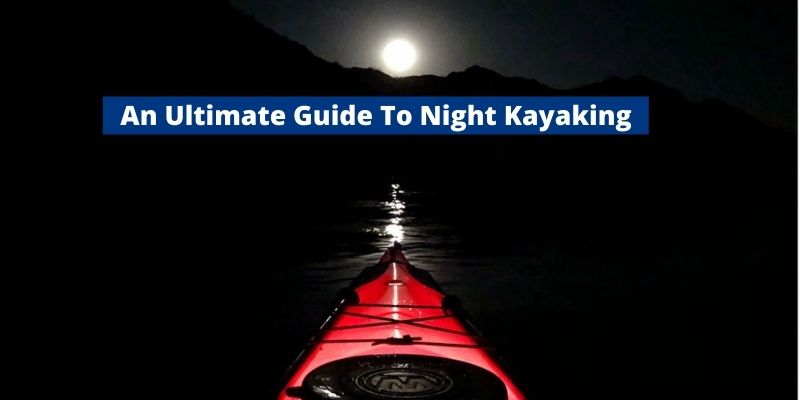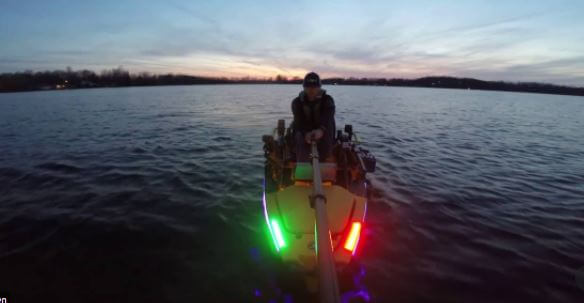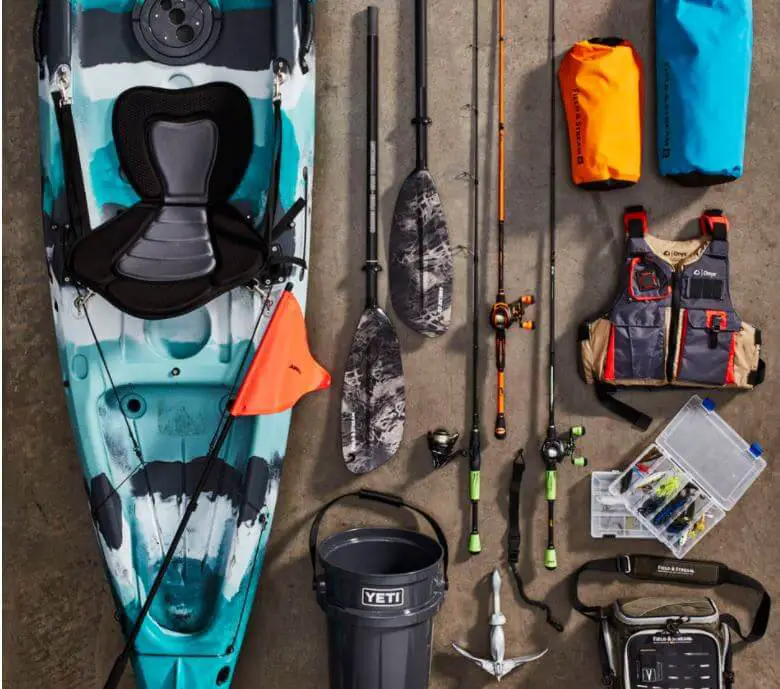Although kayaking is a daytime activity, but Kayaking at night is a great way to enjoy the shining stars above and feel like you’re in your own world. There are no crowds, just peace.
Kayaking is an experience like no other, and if you haven’t tried night kayaking, be ready for your new adventure. But before making this exciting decision take time to learn the rules and tips about safety in a nighttime environment.

Is It Legal To Kayak At Night?
The United States Coast Guard does not have specific rules that would indicate kayaking at night is illegal. However, each state has different regulations regarding nighttime paddling and it’s important for you to become familiarized with the local laws before going out on the water.
The US Coast Guard has some rules you don’t want to break. Rule 25- Sailing Vessels Underway and Vessels Under Oars, as listed by the organization:
“A vessel under oars may exhibit the lights prescribed in this Rule for sailing vessels, but if she does not, she shall exhibit an all-round white light or have ready at hand an electric torch or lighted lantern showing a white light which shall be exhibited in sufficient time to prevent the collision.”
All non-motorized vessels under 23 feet or 7 meters in length are subject to regulation by law classified as “vessels under oars”. These boats include kayaks and canoes, which means that they must follow all safety rules just like any other boat on the water does.
Is Kaying At Night Safe? Potential Risks Of Paddling At Night
Paddling sports such as kayaking can be an enjoyable and safe way to spend time in nature. But there are still some risks that you should consider before taking on this challenging sport, including dehydration or hypothermia due to sweating while out paddling; capsizing from strong waves crashing against your boat with no support beneath it (making one prone towards drowning); severe weather conditions like Hurricane.
Now consider the night situation, bad light, and less visibility. yes, there are many risks associated with paddling at night, and it is not for the faint-hearted.
I don’t want to put you off from taking a kayaking trip at night. In fact, I think it can be an otherworldly experience.
When you don’t have enough light to see clearly, it can be difficult assessing your distance from obstacles and position. You’ll also find that things move slower than they do in regular conditions making them harder for the observer to pinpoint.
Kayaks are great for getting around a body of water, but they can be difficult to spot on the water on a moonlit night by other paddlers.
Protecting yourself from wild animals is an important part of outdoor safety. Some species, like alligators, for example, have been found to be much more dangerous at night than during the day.
Night Kayaking Precautionary Measures
Make Yourself Visible ( Kayak Lights)

If you’re not an experienced paddler and don’t know how to read night navigation lights and signals, conditions will only get more difficult.
If you’re not an experienced paddler and don’t know how to read night navigation lights and signals, conditions will only get more difficult. It’s best to avoid areas where other boats might be navigating in the absence of their navigation lights or signals, otherwise, it could increase the risk of accidents.
When it comes to safety, the best way is always visible. You need both eyes and ears on deck-and you should make yourself known so that others can too.
If you want to make yourself visible while kayaking, always keep kayak lights and a loud noisemaker comes in handy too.
Marine air horns or long-range whistles work well since they’re loud enough (more than 120 dB).
The Coast Guard requires that you carry a waterproof, 360-degree white light as your primary navigational device. This will ensure visibility for both yourself and others when out on the water in any conditions.
To avoid night blindness, place your kayak lights behind you rather than in the line of sight so that it doesn’t affect how well you can see at night.
I know it sounds a little confusing, but just place red and green lights on each side of your kayak. Keep green light on the right side and a red one on the left.
Red and green lights are the best way to tell if another boat is coming towards or going away from you.
- If the red color is on the left and green on the right, the other boat is moving away from you.
- If the green color is on the left and red on the right, the other boat is moving away towards you.
Make Sure You Can See
Kayakers are recommended by professionals to well-fit themselves with high-quality headlamps that can light up their surroundings.
Artificial lighting is actually harmful to your night vision, so try not to use it when kayaking. The headlamp should be used for navigation and checking distances between you and the shore; keep in mind that ambient light can make things seem farther away too.
Plan Your Route

Always plan your route beforehand and make sure to memorize it so that if something happens you can still complete your journey safely. Staying focused will also help you avoid getting lost.
As you paddle in the same waters, it will still look completely different and unfamiliar at night.
On a pitch-black night, it’s easy to lose sight of things. Finding your way back can be difficult if you don’t know where exactly you are lost in the darkness.
It is important to pay attention and stay aware of your surroundings at all times because the water will sneak up on ya. Make sure that there aren’t any low-head dams along the water before going out for a night paddle.
I’d personally recommend keeping a kayak GPS device in nighttime navigation. Not only does it provide detailed information about your location, direction, and speed but also helps track routes for future use or navigation purposes.
I personally think that a GPS should be on every kayakers’ gear list. It’s an essential tool for navigating, but always have a manual backup – a kayak compass and a manual map in case technology fails.
Beware Of The Waves
Sea kayakers should always check the tide predictions before they go out on their next adventure. Tides can be unpredictable and dangerous, so be prepared with knowledge of how they might affect you will help ensure that everything goes smoothly.
It’s easy to get caught in a high tide trap if you don’t know what you’re doing. Launching into the ocean on an incoming wave could leave your kayak stranded or even worse, dragging across the sand and getting stuck.
Always Check The Weather
Safety is a big concern when it comes to kayaking. Before you set out, make sure the weather forecast predicts clear skies and calm seas.
Kayaking at night is challenging enough as it is, but the strong winds and stormy weather can make things even more hazardous. Save your skills for daytime by avoiding going out during these conditions which are not safe to test in any way.
There is no predicting what the weather will be like, but you should always check for updates before your trip and if in doubt postpone.
Bring The Essential Gear

Coast Guard regulations are extremely clear about the need for a safety device on all vessels, including kayaks. PFDs should be worn at all times and it would not make sense to question this because of USCG’s rules or policies
PFD’s are mandatory in any case so you may as well just get one that fits your needs exactly.
Check: Best Kayaking PFD
Here is a list of essential gear
- In case of emergency, you need a smartphone or VHF radio to communicate with people who can help.
- Edibles and water
- Spare clothes
- First Aid Kit
- Illuminating flair or an emergency beacon
- Air horn or an emergency whistle
Summing Up (Kayaking At Night)
You might think that you can do kayaking at night the same way as during the daytime, but this is unrealistic.
Kayaking at night is a different experience. It’s not just about knowing where you are going and what to do when things go wrong; it’s also essential that your kayak can withstand the challenges of an unfamiliar environment, such as rough water or uneven terrain.
